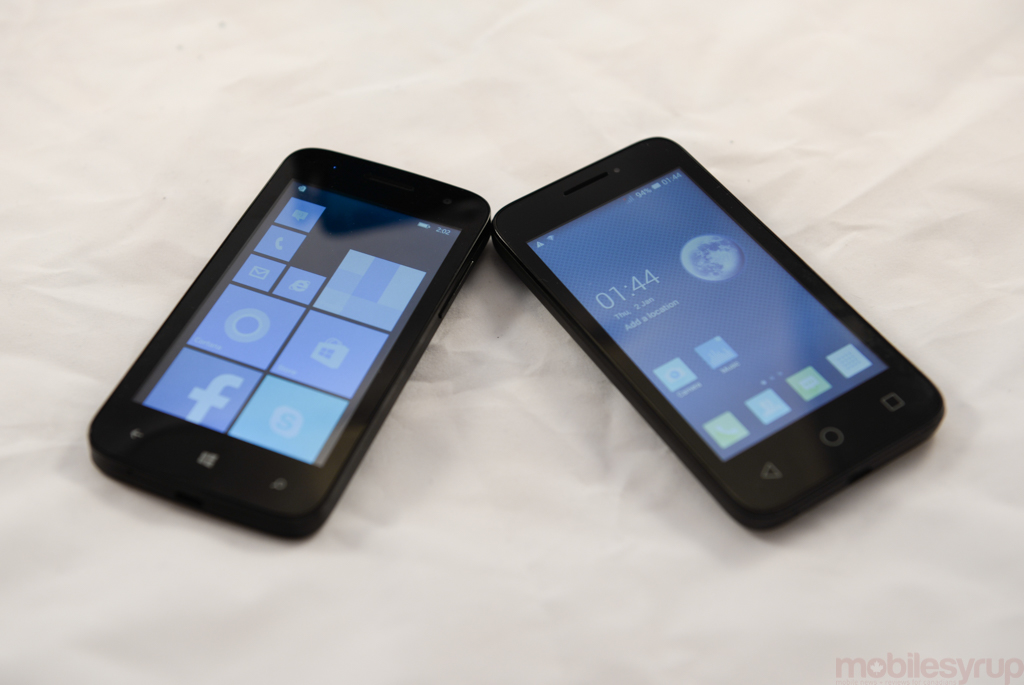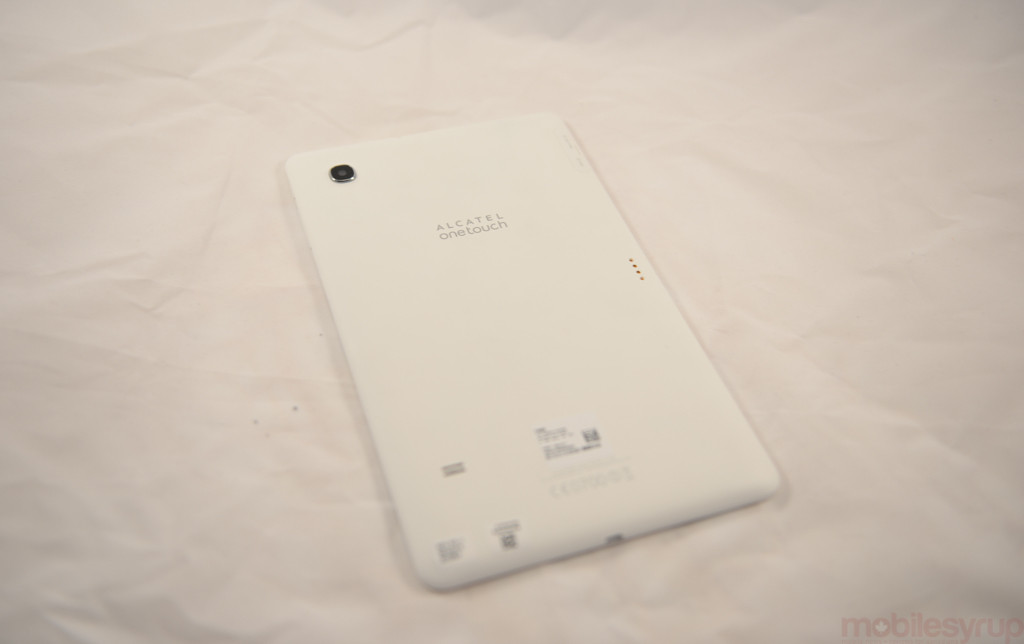
With much of CES focusing on exciting new categories like IoT and wearables, there isn’t a whole lot of room on the show floor for the humble Android tablet. We’ve seen very few of them in the convention centre or in the surrounding hotels where press conferences took place throughout the week. This is a big difference from just a couple of years ago when you couldn’t get away from Android tablets.
Alcatel OneTouch didn’t let us down, though. Alongside its Pixi 3 family of platform-agnostic smartphones, the company this week unveiled a new addition to its OneTouch Pop line of tablets. Dubbed the Alcatel OneTouch Pop 10, this is the largest tablet in the Pop family. Canadians currently only have access to the Pop 7 and the Pop 8, but we’re hoping the Pop 10 will also make it to Canada.
It packs a quad-core CPU, 1 GB of RAM, 8GB of storage, a 5MP camera in the back, a 2MP camera up front, and a 10-inch IPS display (as the name suggests), but slim bezels keep the device extremely compact. When we saw it alongside its 8-inch sibling, it didn’t look significantly bigger. The Pop 10 packs a 4600mAh battery, is 7.9mm thick and weighs in at a scant 0.88lbs, so it’s incredibly light and easy to handle, one of the most important aspects of these larger tablets. According to the spec-sheet, it can also make calls (there is an LTE version).
Overall, we found this Android Lollipop tablet to be very responsive, though it’s not really fair to make judgements based on 10 minutes spent with a brand new unit. No release date or pricing just yet, but we’ll keep you posted on that. Check the video below for our hands-on!
We also got a chance to play with the new line of Pixi 3 smartphones. These are the budget phones that were announced last week and will be available running Windows Phone, Firefox OS, or Android. The Pixi 3 comes in four sizes, increasing in 0.5-inch increments from 3.5 to 5 inches. The only caveat is that customers won’t be able to walk into a store and pick out the OS and screen size of their choosing unless the store has made arrangements to carry that specific combination of the Pixi 3. It’s also unlikely there will be a Moto Maker type situation online where you can configure your own.
Software aside these little phones are about what you’d expect for budget phones. They’re light but feel solidly built. The smallest of the bunch, the 3.5-inch model, is not LTE-enabled, but the rest are. The Pixi 3 (3.5) features a 3.5-inch 320×480 pixel display and is based on a dual-core 1GHz CPU4GB of storage, 512MB of RAM, support for up to 32GB via MicroSD, a 1150mAh battery, and support for dual-sim.
The 4-inch model packs an 800×480 display, a quad-core 1.1GHz CPU, 4GB of storage, 512MB of RAM, support for up to 32GB via MicroSD, and a 1300mAh battery. The 4.5-inch version has the same processor, storage, and RAM, but it ups the battery to 1400mAh and the larger 4.5-inch display has a resolution of 854×480 pixels.
The largest of the bunch is the 5-inch Pixi 3. It’s got a 5-inch 854×480 display, a quad-core 1.1GHz CPU, 4GB of storage, 512MB of RAM, and a 1800mAh battery. The cameras in all of these phones vary depending on the model.
MobileSyrup may earn a commission from purchases made via our links, which helps fund the journalism we provide free on our website. These links do not influence our editorial content. Support us here.



